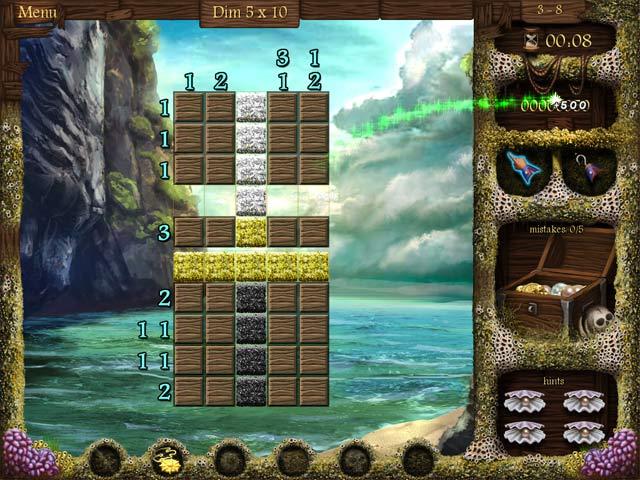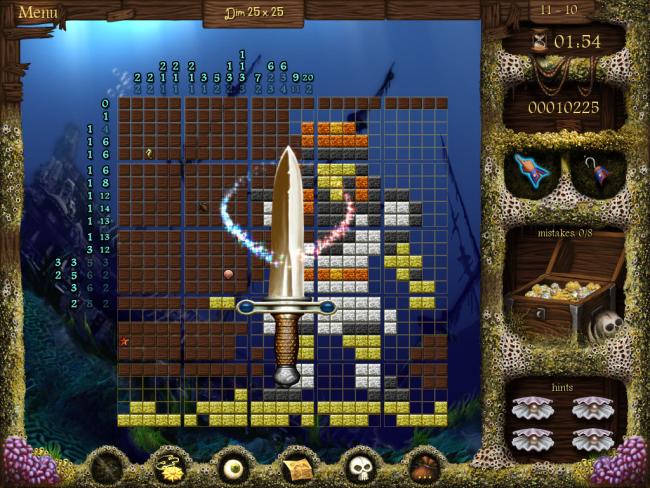- Wondering how to get Monopoly GO! free rolls? Well, you’ve come to the right place. In this guide, we provide you with a bunch of tips and tricks to get some free rolls for the hit new mobile game. We’ll …
Best Roblox Horror Games to Play Right Now – Updated Weekly
By Adele Wilson
Our Best Roblox Horror Games guide features the scariest and most creative experiences to play right now on the platform!The BEST Roblox Games of The Week – Games You Need To Play!
By Sho Roberts
Our feature shares our pick for the Best Roblox Games of the week! With our feature, we guarantee you'll find something new to play!All Grades in Type Soul – Each Race Explained
By Adele Wilson
Our All Grades in Type Soul guide lists every grade in the game for all races, including how to increase your grade quickly!
Arizona Rose and the Pirates’ Riddles Review
When I booted up Arizona Rose and the Pirates’ Riddles, I wasn’t expecting a lot. And I say that in the nicest way possible. Buoyed up by the introduction’s lilting, seaworthy tunes and kitschy story (you’re the “world’s best treasure hunter!”), I was willing to give myself over to some hunting, finding, and light puzzling inside an over-the-top story that served as a break from the genre’s moody tendencies. So when I say this game under delivers on even those expectations, you’ll have an idea of what you’re in for.

Riddle me this…how many number puzzles does it take for a game to stop being fun?
When I booted up Arizona Rose and the Pirates’ Riddles, I wasn’t expecting a lot. And I say that in the nicest way possible. Buoyed up by the introduction’s lilting, seaworthy tunes and kitschy story (you’re the “world’s best treasure hunter!”), I was willing to give myself over to some hunting, finding, and light puzzling inside an over-the-top story that served as a break from the genre’s moody tendencies. So when I say this game under delivers on even those expectations, you’ll have an idea of what you’re in for.
In place of the usual fare about wayward spirits, haunted mansions, and secret societies, Arizona Rose purports to be a story filled with epic adventure and high-seas booty to go along with it. You play as the titular character on what she thinks is a run-of-the-mill antique run to the Galapagos for a wealthy patron, whereon she discovers clues that suggest the existence of legendary pirate Blackbeard, and his peerless treasures. Naturally, you’re off a selfish, Nathan Drake-style side quest to bag the riches and face whatever comes, hidden object style… right?
Wrong. Dead wrong. Blackbeard buried 20,000 leagues under the sea in a vault sealed by the spirits of the legions of pirates he conquered wrong. For every bit that developer Anawiki dispenses of the stodgy hidden object story, they fail to execute on any sense of cohesion throughout. Rote though they may be, many archetypical hidden object games do a serviceable job of mounting some slight tension, building a sense of mystery, or at the very least stoking a feeling of wonderment as you traipse through the illustrated worlds they offer.
Arizona Rose on the other hand relies on the fact that you were told through introductory (and a couple other sporadic) interstitials, with virtually no other effort spent to give the game a sense of narrative… let alone an adventerous one. Far from richly detailed backgrounds, images that may as well be stock photos of tropical environments (jungle, shipwreck, temple) play host to hidden object hunts that – even by generous standards – are extremely tangential, and offer little-to-no environmental interactivity.
Arizona Rose is about as believably the world’s best treasure hunter as she is the world’s best personal assistant, for all the thrill the game provides. And again, I wasn’t expecting explosions and car chases. But even the motifs here are lazy and lacking in any sort of progression. Now, I know what you’re thinking. “But Eli, this isn’t your typical hidden object game! There’s a much bigger focus on number puzzles.”
Well let me tell you… that’s a whole other can of mediocrity! Arizona Rose and the Pirates’ Riddles? More aptly Arizone Rose and that one particular pirate’s one riddle he told everyone ad nauseum…you know the pirate, the one that wouldn’t leave anyone alone! Cue sharp intake of breath. On one hand, it’s refreshing to see that in place of piling hidden object scene after hidden object scene upon the player, the game opts to espouse a different puzzle of choice. Each section of the island you explore will see you uncovering treasure and cracking new parts of the map by solving Blackbeard’s “code,” which takes the form of mosaic puzzles.
And at first, these are a welcomed change. For those uninitiated, mosaic puzzles take the form of grids which hide a picture within, which you can unlock by using the numerical cues beside each row and column to determine how many squares you ought to keep, and in what combination. Only by cross referencing do you gain more knowledge row by row, eventually solving the whole thing. And don’t get me wrong, there’s something extremely well themed about cracking each little code, and guessing the buried treasure as it takes shape.
The problem? Most of the game’s 200 promised levels consist of these puzzles, each of whom gradually gets bigger and more complex. Arizona Rose doles out story when it remembers it’s supposed to have one, tossing you scraps in the form of item descriptions and brief treasure histories – and even then, inconsistently, as most of the items you get will only affect your play during puzzles (use the necklace to reveal squares in the chosen area!). So while you may argue that that’s the purpose of the game, I’d rebuttal that no, that’s the purpose of an activity book.
Had Anawiki made some effort to complement this core mechanic (which like I said, isn’t a crime in of itself!) with some story-centric hidden object hunts, mini-quests that put your items to use, and more than five or ten puzzles of a different variety to give players a sense of adventure, I’d be singing an altogether different tune. But as it stands, this one’s for absolute die hards of mosaic puzzles only. No one else will find a game underneath it all.

The good

The bad
More articles...
Monopoly GO! Free Rolls – Links For Free Dice
By Glen Fox
Wondering how to get Monopoly GO! free rolls? Well, you’ve come to the right place. In this guide, we provide you with a bunch of tips and tricks to get some free rolls for the hit new mobile game. We’ll …Best Roblox Horror Games to Play Right Now – Updated Weekly
By Adele Wilson
Our Best Roblox Horror Games guide features the scariest and most creative experiences to play right now on the platform!The BEST Roblox Games of The Week – Games You Need To Play!
By Sho Roberts
Our feature shares our pick for the Best Roblox Games of the week! With our feature, we guarantee you'll find something new to play!All Grades in Type Soul – Each Race Explained
By Adele Wilson
Our All Grades in Type Soul guide lists every grade in the game for all races, including how to increase your grade quickly!








 “
“